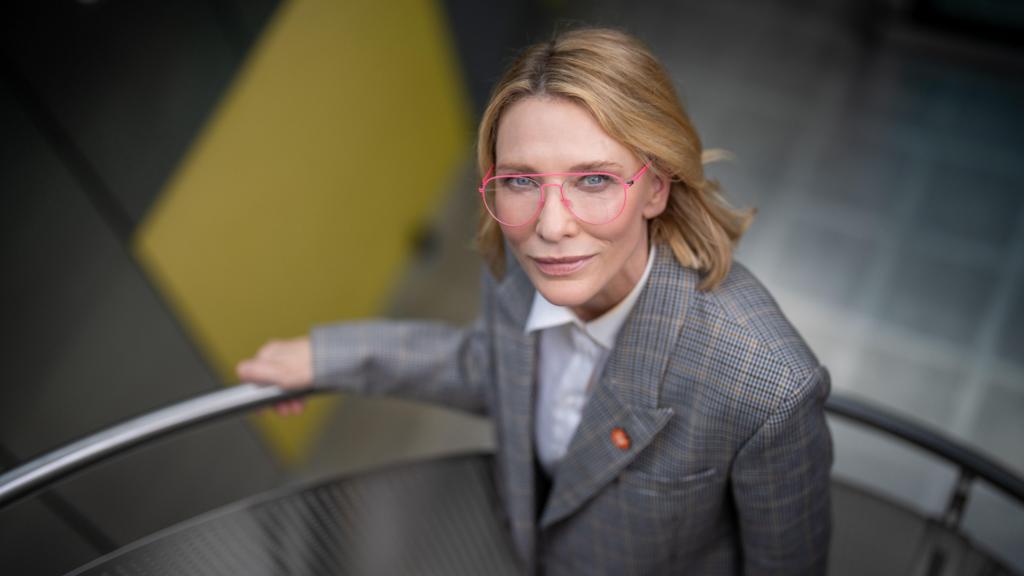“`html
Cate Blanchett, the celebrated Hollywood icon with an impressive collection of accolades, has embarked on a surprising endeavor, immersing herself in the world of seeds.
The actress’s enthusiasm is palpable as she speaks of the banksia species native to her homeland, Australia.
“It’s quite a brutal looking seed pod that only releases its seed in extremely high temperatures,” she explained.
“It does look like a cross between a mallet and a toilet brush. So they’re not always pretty, but yet what comes out of them is so spectacular.”
We encountered Ms. Blanchett at Kew’s Millennium Seed Bank (MSB) at Wakehurst botanic garden in Sussex. A local resident, she has partnered with the project as it commemorates its 25th anniversary.
“Really, I stumbled upon Wakehurst. I was just in awe of the landscape and I always feel regenerated by being in the natural world,” she stated.
“And then I discovered the seed bank, and I literally had my mind blown by the work that goes on here… and I thought, anything I can do to be connected to it – I found it so inspiring.”
The MSB safeguards over 2.5 billion seeds representing 40,000 wild plant species sourced from across the globe.
These seeds, diverse in shape, size, and color, undergo meticulous processing, drying, and storage in freezers maintained at a chilling -20C.
In 2000, the conservation project was inaugurated by The King, then the Prince of Wales. He recently participated in a special episode of Kew’s podcast, Unearthed: The Need For Seeds, alongside Cate Blanchett.
During the recording, His Majesty expressed his concerns regarding the alarming rate at which plant species are disappearing.
“I know how absolutely critical it all is, and the destruction of rainforests, the extinction of endless species, which have very likely remarkable properties,” he conveyed on the podcast.
Initially, the seed bank was conceived as a ‘doomsday vault’, a repository to protect wild plants from extinction.
However, 25 years later, the collection is now being leveraged for a different purpose: restoring threatened environments.
“We want those seeds to be back out in the landscape,” explained Dr. Elinor Breman from the MSB, who has been guiding Cate Blanchett through the team’s initiatives.
“We’re just providing a safe space for them until we can get them back out into a habitat where they can thrive and survive.”
These efforts include projects such as the one underway in the South Downs, where a specially formulated seed mix from the MSB is being sown to rehabilitate the rare chalk grasslands.
This restoration work is being replicated worldwide.
“We’ve been to every kind of habitat, from sea level to about 5,000m, and from pole to pole – literally,” explained Dr Breman.
“And we’re involved in restoring tropical forest, dry deciduous forest, grassland, steppe – you name it – we’re trying to help people put those plants back in place.”
The seed bank also played a crucial role in plant restoration following the devastating wildfires that swept across Australia in 2019, a fact that resonates deeply with Cate Blanchett.
“There are almost 9,000 species of Australian plant that are stored [at the MSB]. And we know that bushfires are getting increasingly more intense. And it’s sad to say – but knowing that insurance policy exists, is of great solace to me.”
As an ambassador for Wakehurst, the actress has had the opportunity to engage directly with the seeds.
“Have I got dirt under my fingernails? Well, I’m trying to turn my brown thumbs green,” she laughed.
“You know, living in Sussex, you can’t not but become a passionate gardener. So I’ve had a lot of questions about how one stores seeds as a lay person, and I’ve learned a lot about that. My seed management has definitely, definitely improved.”
After spending significant time with the researchers at the MSB, is Ms. Blanchett tempted to trade the film set for the laboratory?
“I wish I had the skill – maybe I could play a scientist,” she quipped.
Cate Blanchett describes the seed bank as one of the UK’s best kept secrets, expressing her belief that its work will continue to gain importance in the coming years.
“You often think, where are the good news stories? And we’re actually sitting inside one,” she stated.
“You come here, you visit the seed bank, you walk through such a biodiverse landscape, and you leave uplifted. You know change is possible and it’s happening.”
The giant pumpkin’s huge size is confirmed during an annual vegetable-weighing event in Reading.
The prized plant collection has been recognised for its “unique historical significance”.
A man says he is overjoyed that an agave americana has bloomed after 20 years in his front garden.
Gardens around the world are testing the weight capacity of giant waterlily leaves this month.
Hilary Chappin says her beloved agave, raised from a pot in the 1970s, is to bloom for the first time.
“`

